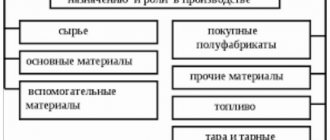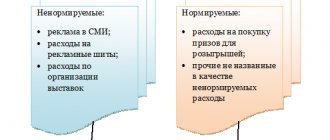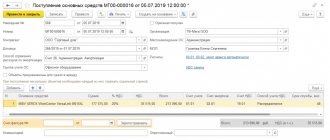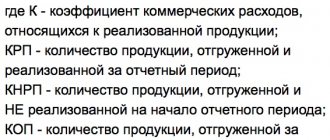What applies to TZR
In accounting, transportation and procurement expenses (TZR) include costs associated with the procurement and delivery of materials to the organization (clause 70 of the Methodological Instructions, approved by Order of the Ministry of Finance of Russia dated December 28, 2001 No. 119n).
TZR, in particular, include:
- costs associated with loading and unloading operations;
- transportation costs;
- travel expenses associated with the procurement and delivery of materials;
- fees for storage of materials at places of purchase, at railway stations, ports, marinas;
- warehouse expenses (if warehouses are used both for the procurement of materials and for storing goods (finished products), such expenses can be attributed to current costs);
- expenses for maintaining procurement points, warehouses organized in places where materials are procured;
- fees for loans and borrowings raised for the purchase of materials (accrued before the materials were accepted for accounting);
- shortages and spoilage within the limits of natural loss;
- markups, allowances, commissions for intermediaries.
Such a list is given in paragraph 70 of the Methodological Instructions, approved by Order of the Ministry of Finance of Russia dated December 28, 2001 No. 119n.
An approximate nomenclature of TZR is given in Appendix 2 to the Methodological Instructions approved by Order of the Ministry of Finance of Russia dated December 28, 2001 No. 119n.
Accounting entries
In accordance with paragraph 83 of the Guidelines for accounting of inventories, transportation and procurement costs (TZR) of an organization are taken into account by:
- assigning material and materials to a separate account “Procurement and acquisition of materials”, according to the supplier’s settlement documents;
- assigning goods and materials to a separate sub-account to the “Materials” account;
- direct (direct) inclusion of TZR in the actual cost of the material (attachment to the contract price of the material, attachment to the monetary value of the contribution to the authorized (share) capital contributed in the form of inventories, attachment to the market value of materials received free of charge, etc.).
The specific option for accounting for goods and materials is established by the organization independently and is reflected in the accounting policies of the organization
The composition of transportation and procurement costs (TZR) includes:
- loading and transportation costs;
- expenses for maintaining the organization's procurement and warehouse apparatus
- expenses for maintaining special procurement points, warehouses and agencies organized in procurement areas;
- commissions paid to supply and other intermediary organizations;
- fees for storage of materials at places of purchase (ports, railway stations, etc.);
- interest payments for granted loans and borrowings related to the purchase of materials;
- travel expenses for direct procurement of materials;
- the cost of losses on delivered materials in transit (shortages, damage) within the limits of natural loss rates;
- other expenses.
An approximate nomenclature of transport and procurement costs is defined in Appendix 2 to the guidelines.
Based on the composition of the TZR, the direct inclusion of transport costs in the actual cost of the material is difficult to implement in real activities. Data (primary documents) on the composition and size of the goods and materials may be received with a significant delay in relation to the moment of receipt, and most importantly, to the moment the materials are written off for production, and the further formation of the cost of manufactured products (services).
Thus, there remain the first two ways of reflecting TKR in an organization’s accounting. The general meaning of these methods is the separate accounting (accumulation) of goods and materials during the reporting period and the further redistribution of the amount of goods and materials in proportion to the consumption and balances of materials in warehouses. Calculation of the amount of TZR to be written off to the accounting accounts that reflect the consumption of relevant materials is carried out using the following formula:
Distribution coefficient of goods and materials = (materials and goods at the beginning of the reporting period + goods and materials for the reporting period) / (Balance of materials at the beginning of the reporting period + Receipt of materials for the reporting period) * 100.
Amount of materials and equipment to be written off for the reporting period = Material consumption for the reporting period* Distribution coefficient /100.
If the specific weight of TZR does not exceed 10% of the accounting cost of materials, their amount can be completely written off to the account “Main production”, “Auxiliary production” and to increase the cost of materials sold.
Accounting: methods of accounting for goods and materials
In accounting, take into account transportation and procurement costs in one of the following ways:
- directly in the actual cost of each unit of materials;
- separately on account 15 “Procurement and acquisition of materials” (with subsequent attribution to account 16 “Deviation in the cost of material assets”);
- separately on a separate sub-account opened to account 10 “Materials”, for example on the sub-account “Transportation and procurement costs”.
Fix the chosen method of accounting for goods and materials in the accounting policy.
This procedure is established by paragraph 83 of the Methodological Instructions, approved by Order of the Ministry of Finance of Russia dated December 28, 2001 No. 119n.
For organizations that have the right to keep accounting in a simplified form, a special procedure for accounting for expenses is provided (Parts 4, 5, Article 6 of the Law of December 6, 2011 No. 402-FZ).
If an organization includes material and equipment in the actual cost of materials, then do not keep separate records of these expenses. When materials arrive, make the following entries:
Debit 10 Credit 60 (20, 21, 75…)
– the receipt of materials is reflected;
Debit 10 Credit 60 (76, 23, 26…)
– included TZR to the cost of materials.
If the organization accounts for material and materials separately on account 10, then upon receipt of materials, make the following entries:
Debit 10 Credit 60 (20, 21, 75…)
– the receipt of materials is reflected at book value;
Debit 10 subaccount “Transportation and procurement costs” Credit 60 (76, 23, 26...)
– TZR taken into account.
If an organization accounts for inventory items separately on account 15, then upon receipt of materials, the following entries need to be made:
Debit 15 Credit 60 (76)
– the receipt of materials is reflected in the assessment provided for in the contract (other documents);
Debit 15 Credit 60 (76)
– taken into account in the actual cost of TZR materials;
Debit 10 Credit 15
– materials are capitalized at the accounting price.
Write off deviations of the actual cost from the book price at the time of posting the materials using the following entries:
Debit 16 Credit 15
– the deviation of the actual cost of received materials from their book price is reflected;
Debit 15 Credit 16
– the excess of the book price over the actual cost of purchased materials is reflected.
If TZR is reflected separately, then their analytical accounting should be carried out in the context of individual types and groups of materials. This means that the total amount of TRP associated with the procurement and delivery of heterogeneous materials must be distributed between them.
There is an exception to this rule. If the ratio of TRP and the cost of procured (delivered) materials is insignificant, then they can not be distributed and taken into account in the total amount:
- or on account 10 subaccount “Transportation and procurement costs”;
- or on account 15 “Procurement and acquisition of materials” (with subsequent attribution to account 16 “Deviation in the cost of material assets”).
This procedure is provided for in paragraph 84 of the Methodological Instructions, approved by Order of the Ministry of Finance of Russia dated December 28, 2001 No. 119n.
If an organization maintains separate records of goods and materials, materials are reflected in accounting at accounting prices. An organization can use the following as accounting prices:
- planned price approved by the organization;
- negotiated price;
- actual cost of materials for the last reporting period (month, quarter, year);
- the average price of the group (if the planned price is set not for a specific item number, but for their group).
If the accounting price deviates from the actual cost by more than 10 percent, it must be revised.
Such rules are established by paragraph 80 of the Methodological Instructions, approved by Order of the Ministry of Finance of Russia dated December 28, 2001 No. 119n.
If inventory items are accounted for separately, then they must be written off to the same accounts to which materials are written off. Document this at the end of the month with the following posting:
Debit 20 (23, 25, 26...) Credit 16 (10 subaccount “Transportation and procurement expenses”)
– TZR for consumed materials are written off.
This is stated in paragraph 86 of the Methodological Instructions, approved by order of the Ministry of Finance of Russia dated December 28, 2001 No. 119n.
Methods for accounting for goods and materials
How the organization will reflect the costs associated with the purchase of inventories must also be recorded in its accounting policies. You can choose from the following options for accounting for goods and materials:
- Using accounts 15 “Procurement and acquisition of materials” and 16 “Deviation in the cost of material assets.”
- Using a separate subaccount in the inventory accounts 10 “Materials” or 41 “Goods”.
- Directly included in the actual cost of inventories.
- On account 44 “Sales expenses” - only for goods.
The first three methods apply to both the purchase of materials and the purchase of goods. They follow from the requirement of paragraph 6 of PBU 5/01 that the costs of delivery and procurement are included in the actual cost of inventories. In addition, these 3 methods are listed in paragraph 83 of the Guidelines, but they only talk about materials. At the same time, in the instructions to the Chart of Accounts (approved by order of the Ministry of Finance of the Russian Federation dated October 31, 2000 No. 94n), the description of the 41st account states that account 15 for goods is used in the same way as for materials. Therefore, we combine the first three methods for all inventories. But the 4th method, by virtue of clause 13 of PBU 5/01, is used only for goods. Let's look at examples of the use of each method.
Example 1
Cassiopeia LLC produces bearings. Accounting for materials is carried out at planned prices. TZR are included in the deviations of the actual cost from the planned one. In August, Cassiopeia LLC purchased 120 tons of rolled steel for 33,400 rubles. per ton, total RUB 4,008,000. (incl. VAT 18% - RUB 611,390). 87,000 rubles were paid for the delivery of these raw materials. (incl. VAT 18% - RUB 13,271). The planned cost of a ton of rolled steel is 27,000 rubles.
| Description | Dt | CT | Amount, rub. |
| The purchase price of rolled steel is reflected | 15 | 60 | 3 396 610 |
| VAT on rolled steel is reflected | 19 | 60 | 611 390 |
| Delivery costs included | 15 | 60 | 73 729 |
| VAT on delivery reflected | 19 | 60 | 13 271 |
| Rolled steel was capitalized at the accounting price | 10 | 15 | 3 240 000 (120 × 27 000) |
| The excess of the actual value over the accounting value at the end of the month is written off | 16 | 15 | 230 339 (3 396 610 + 73 729 – 3 240 000) |
Example 2
Orion LLC produces parts for machine tools. Accounting for raw materials is carried out at actual prices; a separate sub-account is provided for TZR. Orion LLC received 170 tons of rolled metal at 67,000 rubles, the total amount is 11,390,000 rubles, incl. VAT 18% - RUB 1,737,458. Delivery costs amounted to RUB 156,000, incl. VAT 18% - RUB 23,797. The delivery was carried out urgently to prepare a new order. Therefore, the company sent an employee on a business trip, who agreed on additional volumes and entered into an additional agreement with the supplier. Business trip expenses amounted to RUB 37,500.
| Description | Dt | CT | Amount, rub. |
| The purchase price of rolled metal is reflected | 10.1 | 60 | 9 652 542 |
| VAT on rolled metal products is reflected | 19 | 60 | 1 737 458 |
| Delivery is reflected in the cost of raw materials in a separate sub-account “TZR for raw materials and materials” | 10.1.1 | 60 | 132 203 |
| VAT on delivery reflected | 19 | 60 | 23 797 |
| Business trip expenses are reflected as part of the TZR | 10.1.1 | 60 | 37 500 |
The third accounting method is suitable for those organizations that use few different types of materials. The application of this method is shown in example 3.
Example 3
Malaya Dipper LLC packages one type of honey for retail sale. In August, 1,750 kg of honey were purchased from beekeepers in the amount of 875,000 rubles, excluding VAT. 75,000 rubles were spent on delivery. The salary of the forwarder, who makes the purchase and escorts the cargo, for August turned out to be equal to 67,000 rubles, social contributions on his salary - 20,234 rubles. TZR at Malaya Dipper LLC is recorded in the materials account, directly included in their cost.
| Description | Dt | CT | Amount, rub. |
| The purchase price of honey is reflected | 10.1 | 60 | 875 000 |
| Transport costs reflected | 10.1 | 60 | 75 000 |
| The salary of the forwarder is reflected | 10.1 | 70 | 67 000 |
| Social contributions accrued on the forwarder's salary | 10.1 | 69 | 20 234 |
The fourth method can be chosen by trading organizations (clause 13 of PBU 5/01), as well as when accounting for goods by non-trading organizations, that is, those that conduct trading activities in addition to other activities (clause 227 of the Methodological Instructions).
Example 4
Ursa Major LLC is a distributor of electronic equipment. In August, 300 televisions of the same brand were purchased for the amount of RUB 1,650,000, incl. VAT 18% - RUB 251,695. Delivery costs amounted to 57,000 rubles, incl. VAT 18% - RUB 8,695.
| Description | Dt | CT | Amount, rub. |
| The equipment has been registered | 41 | 60 | 1 398 305 |
| Incoming VAT on equipment is reflected | 19 | 60 | 251 695 |
| Transport costs reflected | 44 | 60 | 48 305 |
| Incoming VAT on delivery is reflected | 19 | 60 | 8 695 |
Inclusion in the cost of goods and materials carried out after the transfer of ownership
Situation: is it possible to include transportation and procurement costs (TPC) in the actual cost of materials in accounting? The expenses were incurred after the transfer of ownership of the materials.
The answer to this question depends on the method of reflecting received materials.
Application of the method using accounts 15 “Procurement and acquisition of material assets” and 16 “Deviation in the cost of material assets” makes it possible to take into account in the actual cost of materials TZR produced after the transfer of ownership of materials. In this case, the debit of account 15 reflects the receipt of materials. Then the organization reflects in the debit of account 15 the costs of delivery (loading and unloading, etc.), including those incurred after the transfer of ownership of the materials. When all expenses have been taken into account, the organization will credit the materials to account 10 (at the accounting price), and the deviation of the actual cost (taking into account the technical requirements) from the accounting prices will be written off to account 16. These amounts are subsequently (at the end of the month) written off to account 20 (23, 25, 26) in proportion to the cost of written-off materials. Consequently, this option makes it possible to distribute equipment and materials (including those produced after the transfer of ownership of materials) between written-off and non-written-off materials. That is, if, for example, materials are used to produce a product, TZR are included in its cost in proportion to the cost of written-off materials.
This procedure follows from the Instructions for the chart of accounts (accounts 10, 15, 16), paragraph 8 of paragraph 6 of PBU 5/01 and paragraphs 86, 87 of the Methodological Instructions approved by Order of the Ministry of Finance of Russia dated December 28, 2001 No. 119n.
If the organization reflects the receipt of materials on account 10 without using accounts 15 and 16, then when they are transferred to the place of use, internal movement actually occurs (clause 51 of the Methodological Instructions approved by Order of the Ministry of Finance of Russia dated December 28, 2001 No. 119n). That is, the organization delivers materials to the place of use, the cost of which has already been formed on account 10. Based on clause 12 of PBU 5/01, the actual cost of materials cannot be changed. Therefore, TZR do not increase the actual cost of materials, but, depending on the purpose of use, MPZ are taken into account as part of expenses in account 20 (23, 25, 26, 97) (clauses 5, 16, 18 PBU 10/99). In this case, in accounting, reflect the amount of delivery costs (loading and unloading, etc.) by posting:
Debit 20 (23, 25, 26, 97) Credit 60
– expenses associated with the delivery of materials to the place of use are reflected.
Advice: there are arguments that allow you to take into account the cost of materials and equipment in the actual cost of materials, even if the organization receives materials and materials without using accounts 15 and 16. They are as follows.
To take into account the material and labor costs in the actual cost of materials, open a sub-account “Materials in transit” to account 10. This will allow you to adjust the cost of materials by the amount of fuel and equipment produced after the receipt of materials. This conclusion can be made by paragraph 26 of PBU 5/01, which allows for clarification of the actual cost of materials in transit.
When using the “Materials in transit” subaccount opened to account 10, make the following entries:
Debit 10 subaccount “Materials in transit” Credit 60
– reflects the cost of materials in transit;
Debit 10 subaccount “Materials in transit” Credit 60
– the actual cost of materials was adjusted to the amount of fuel and equipment produced after the transfer of ownership to the industrial plant;
Debit 10 Credit 10 subaccount “Materials in transit”
– materials have been capitalized.
This procedure follows from the Instructions for the chart of accounts.
The concept of transport and procurement costs
TZR combine a whole range of costs associated with the procurement, purchase and delivery of goods, inventories, tools and other material assets (MV). These include the following expenses:
- Transportation;
- Cargo insurance;
- customs duties;
- remuneration to intermediary or supply companies;
- loading of the MC (if there are such conditions in the contract);
- maintenance of the company's warehouse apparatus (including salaries and contributions to funds);
- personnel involved in the reception, procurement, organization of storage and release of MC;
- employees of procurement offices and agencies established at the places of purchase of the MC;
- workers involved in the procurement/purchase of medical materials, their transportation or support;
- payment for storage of MC, for example, at railway stations or ports;
- payment of interest on a loan for the purchase of inventory items until they are recognized in accounting;
- travel expenses directly related to the purchase of medical equipment;
- the amount of losses along the MC that occurred en route within the current loss norms.
Companies are given the right to establish their own list of such costs, acceptable to them, and indicate it in their accounting policies. The nomenclature and characteristics of transport and procurement expenses are presented in Appendix No. 2 to the Methodology for accounting of inventories, approved by the Ministry of Finance of December 28, 2001 No. 119n.
Distribution of fuel and equipment when supplying several types of materials
Situation: how to distribute goods and materials in accounting among several types of materials delivered by one vehicle?
The procedure for distributing transportation costs in accounting is not regulated by regulatory documents. Therefore, an organization can develop the optimal method independently and consolidate it in its accounting policies (clauses 4, 7 of PBU 1/2008). For example, when delivering dissimilar materials by one vehicle, TRP can be distributed in proportion to the number of materials, their weight or volume, depending on the specifics of the organization’s activities (or on the range of assets received).
If one delivery includes several dissimilar groups of materials (for example, some materials are measured in pieces, others in kilograms), then the organization must first distribute the goods and materials between these groups. This can be done, for example, in proportion to the number of seats occupied in the vehicle. There is another option - to convert all units of measurement to one, for example, to kilograms. The second option is more universal, but requires more complex calculations. Within one group of materials, TZR can be distributed in proportion to those units of measurement in which each nomenclature number of this group is taken into account.
An example of the distribution of TZR between dissimilar materials by the method of converting all units of measurement to one
Two types of materials were delivered to Alpha LLC in one vehicle: sheet metal (100 sheets) and a metal corner (200 m). Transport costs amounted to 7,000 rubles. without VAT.
To distribute transportation costs, Alpha's accountant converted various units of measurement of materials into one - kilograms. The weight of one sheet of metal is 60 kg. The weight of one meter of corner is 15 kg. The total weight of the delivered materials is: 60 kg × 100 sheets + 15 kg × 200 m = 9000 kg.
The accountant distributed the amount of transportation expenses as follows.
Transport costs for the delivery of sheet metal amounted to: 7,000 rubles. × 6000 kg: 9000 kg = 4667 rub.
Transport costs for delivery of a metal corner amounted to: 7,000 rubles. × 3000 kg: 9000 kg = 2333 rub.
Accounting: methods of distribution of equipment and materials
To reduce the labor intensity of distributing transportation and procurement costs, an accountant can use one of the following simplified methods:
- the amount of TZR for all materials accepted for accounting in the reporting period is fully distributed between materials written off to accounts 20, 23 and 91-2. The use of this method is permitted if the amount of TZR does not exceed 10 percent of the cost of all written-off materials;
- the average percentage of inventories related to the cost of written-off materials is rounded to whole units;
- the amount of TZR is distributed taking into account their percentage prevailing at the beginning of the reporting period. The average percentage for the reporting period is not calculated in this case. If the amount of TRP determined in this way is overestimated or underestimated, then it should be adjusted in the next reporting period;
- the amount of TZR is distributed according to the standard fixed in the planned calculations. If actual costs differ from standard costs, then the difference is taken into account in the next reporting period;
- the amount of TZR is completely written off to increase the cost of materials consumed in the reporting period. The use of this method is allowed if the amount of TZR does not exceed 5 percent of the accounting cost of materials.
This procedure is provided for in paragraph 88 of the Methodological Instructions, approved by Order of the Ministry of Finance of Russia dated December 28, 2001 No. 119n.
Carrying out calculations
Calculation of transport costs in the estimate is based on tariff rates. They, in turn, are calculated for the delivery of various types of cargo. If the available information is not enough to carry out calculations, then organizations have the right to use aggregated indicators. They have information about the price of TRP per 1 ton of cargo, which can be expressed in monetary terms or as a percentage of the cost. Moreover, indicators may differ depending on areas and types of construction.
The level of regulatory markup depends on the type of cargo. For example, if we are talking about the costs of adapting large-sized cargo, then the size of the TZR in the estimate is usually considered as 5% of the cost. This figure includes delivery costs, intermediary services and other expenses incurred.
Construction companies use route diagrams to calculate transportation costs. If they seriously differ from the established ones, then a calculation must be carried out. For this purpose, form 12 and 13 from Appendix R to the RDS Guidelines No. 8.01.105-3 is used. Such information is displayed as follows:
- First, the initial information is written down;
- then a direct calculation of future transportation costs for certain operations is made.
When carrying out calculations, construction companies are guided by SNiP No. 4.04-91. The types of prices used must also be taken into account. For example, the transfer of cargo can be carried out at the manufacturer’s warehouse, with an intermediary. The final cost level may include many components. This also includes allowances, if any.
Sometimes the buyer is unable to provide a detailed estimate. In this case, an agreement is concluded between the customer and the cargo manufacturer to display transportation and procurement costs as a percentage in the estimate of the cost amount. Moreover, the percentage value can be set at the level of regional standards or in accordance with individual calculations.
Similar articles
- Calculation of transport costs - formula
- Accounting for transport costs
- What is included in overhead costs in the estimate?
- Transportation and procurement costs
- VAT compensation under the simplified tax system in the estimate
Accounting: writing off TZR as expenses
Before determining the amount of inventories that are written off as expenses of the reporting period (month), you need to calculate the average percentage of inventories related to the cost of written-off materials. To do this, use the formula:
| Average percentage of inventories related to the cost of written-off materials | = | Balance of inventory at the beginning of the reporting period | + | Amount of inventory for materials received in the reporting period | : | Cost of remaining materials at the beginning of the reporting period (in accounting prices) | + | Cost of materials received during the reporting period (in accounting prices) | × | 100% |
After calculating the average percentage, determine the amount of inventory, which is written off to the cost of the reporting period. To do this, use the formula:
| The amount of inventories that is written off to the cost of the reporting period | = | Average percentage of inventories related to the cost of written-off materials | × | Accounting cost of materials consumed |
This procedure is provided for in paragraph 87 of the Methodological Instructions, approved by Order of the Ministry of Finance of Russia dated December 28, 2001 No. 119n.
An example of reflecting TZR in accounting using accounts 15 and 16
LLC "Proizvodstvennaya" is engaged in the manufacture of metal products. The organization keeps records of incoming materials using accounts 15 and 16. As of February 1, the organization’s records included:
- on account 10 - metal in the amount of 10 tons at a discount price of 2800 rubles/t for a total amount of 28,000 rubles;
- on account 16 – the balance of goods and materials related to this type of materials is 3,000 rubles.
During the month, “Master” purchased 50 tons of metal in the amount of 168,150 rubles. (including VAT – 25,650 rubles). The amount of TZR for these materials amounted to 17,700 rubles. (including VAT - 2700 rubles). In February, 35 tons of metal were transferred to production.
The Master's accountant made the following entries in the accounting:
Debit 15 Credit 60 – 142,500 rub. (168,150 rubles – 25,650 rubles) – the receipt of metal is reflected;
Debit 19 Credit 60 – 25,650 rub. – VAT on purchased metal is taken into account;
Debit 68 subaccount “Calculations for VAT” Credit 19 – 25,650 rub. – accepted for deduction of VAT on purchased materials (if there is a supplier invoice);
Debit 10 Credit 15 – 140,000 rub. (50 t × 2800 rub.) – metal was capitalized at accounting prices;
Debit 15 Credit 60 – 15,000 rub. (RUB 17,700 – RUB 2,700) – TZR reflected;
Debit 19 Credit 60 – 2700 rub. – VAT on TZR is taken into account;
Debit 68 subaccount “Calculations for VAT” Credit 19 – 2700 rub. – accepted for deduction of VAT on TZR;
Debit 16 Credit 15 – 17,500 rub. (RUB 142,500 + RUB 15,000 – RUB 140,000) – the difference between the book price and the actual cost of the received metal is written off;
Debit 20 Credit 10 – 98,000 rub. (35 tons × 2800 rub.) – the accounting value of the metal transferred to production is written off.
The amount of fuel and equipment, which is written off as cost in February, was calculated by Master’s accountant as follows.
The cost of metal in February, taking into account the balance at the beginning of the month (in accounting prices), was: 2800 rubles. × 10 t + 2800 rub. × 50 t = 168,000 rub.
The amount of TZR in February, taking into account the balance at the beginning of the month, is equal to: 3000 rubles. + 17,500 rub. = 20,500 rub.
The average percentage of inventory items related to the cost of written-off materials was: RUB 20,500. : 168,000 rub. × 100% = 12.2%.
The amount of inventory, which is written off to cost in February, is equal to: 98,000 rubles. × 12.2% = 11,956 rubles.
Debit 20 Credit 16 – 11,956 rub. – TZR for April were written off.
Use an accountant's certificate as a document confirming the calculation of the amount of TZR.
BASIC
The composition of TZR in tax accounting is not defined. Therefore, we can equate to them the costs listed in paragraph 70 of the Methodological Instructions, approved by Order of the Ministry of Finance of Russia dated December 28, 2001 No. 119n. That is, the composition of costs will be the same as in accounting.
At the same time, in relation to expenses for which the Tax Code of the Russian Federation provides for a special recognition procedure, this procedure must be taken into account. For example, interest on borrowed funds (including those raised for the purchase of materials) is normalized in tax accounting (Article 269 of the Tax Code of the Russian Federation) and is included in non-operating expenses (subclause 2, clause 1, Article 265 of the Tax Code of the Russian Federation). The Tax Code of the Russian Federation does not provide for a different procedure for their accounting. Therefore, they cannot be included in the cost of materials (including as TRP).
Losses from shortages (spoilage) identified when receiving materials within the limits of natural loss are included in material costs under a separate item (subclause 2, clause 7, article 254 of the Tax Code of the Russian Federation). Such shortages (losses) are not considered direct expenses, therefore they reduce the tax base for income tax in the period when the shortage (damage) was identified (clause 2 of Article 318 of the Tax Code of the Russian Federation). They are not included in the cost of materials (including as TRP). For more information about accounting for losses and shortages, see How to record shortfalls in the delivery of inventory items.
TZR, for which a special tax accounting procedure is not provided, are included in full in the cost of purchased materials (clause 2 of Article 254 of the Tax Code of the Russian Federation). When calculating income tax, they do not form an independent type of expense and are written off as part of the cost of materials the acquisition of which was associated.
The composition of the TRP, which forms the actual cost (cost) of materials in accounting and tax accounting, is presented in the table.
VAT on TZR is deductible subject to the conditions provided for in Articles 171 and 172 of the Tax Code of the Russian Federation. Chapter 21 of the Tax Code of the Russian Federation does not establish additional restrictions for tax deductions for TZR.
Definition and methods of accounting for goods and materials
Inventory and equipment are expenses of an organization directly related to the acquisition and delivery of goods and materials, including materials and inventory.
Examples of such expenses:
- fare,
- services for providing information about purchased materials,
- Loading Unloading,
- storage,
- intermediaries' commission,
- customs payments, etc.
An approximate list of materials and equipment when purchasing materials is given in Appendix 2 to the Guidelines for accounting of inventories, approved. By Order of the Ministry of Finance of the Russian Federation dated December 28, 2001 N 119n (hereinafter referred to as the Guidelines).
When choosing an accounting option for goods and materials when purchasing materials, you must be guided by:
- clause 6, clause 11 PBU 5/01 “Accounting for inventories”;
- Methodological guidelines for accounting of inventories, approved. By Order of the Ministry of Finance of the Russian Federation dated December 28, 2001 N 119n.
BOO. Additional costs associated with purchasing materials may be accounted for in different ways. The organization must choose a method of accounting for them and consolidate it in its accounting policies.
Options for accounting for goods and materials:
- in the actual cost of materials on account 10 “Materials”;
- separately from materials in the subaccount to account 10 “Materials”;
- in the actual cost of materials on account 15.01 “Procurement and acquisition of materials”.
WELL. Recognition of expenses associated with the acquisition of inventories is made in accordance with clause 2 of Art. 254 of the Tax Code of the Russian Federation: all additional costs associated with the purchase of inventories are taken into account in their cost (with the exception of costs for which special accounting methods are established: for example, interest on a loan).
In 1C, only one method of accounting for material and equipment when purchasing materials is automated - at their actual cost. This method ensures accounting of goods and materials according to uniform rules in accounting and accounting records.
When choosing the second and third methods, you will have to write off costs as expenses manually both in accounting and tax accounting.
Let's take a closer look at the methods of accounting for material and equipment when purchasing materials and the possibility of using them in 1C.
simplified tax system
The tax base of simplified organizations that pay a single tax on income is not reduced by TZR (clause 1 of Article 346.14 of the Tax Code of the Russian Federation).
If an organization pays a single tax on the difference between income and expenses, TZR should be included in the cost of materials (subclause 5, clause 1, article 346.16, clause 2, article 254 of the Tax Code of the Russian Federation). The procedure for writing them off fully complies with the rules that apply when calculating income tax, taking into account the provisions of paragraph 2 of Article 346.17 of the Tax Code of the Russian Federation (Clause 2 of Article 346.16 of the Tax Code of the Russian Federation). This paragraph establishes a mandatory condition for the recognition of expenses during simplification - their payment.
OSNO and UTII
If an organization applies a general taxation system and pays UTII, then it must keep separate records of income and expenses to calculate income tax and VAT (clause 9 of Article 274, clause 4 of Article 170 of the Tax Code of the Russian Federation).
Under the general taxation system, TZR are not taken into account separately and are included in the cost of materials (clause 2 of Article 254 of the Tax Code of the Russian Federation). If materials are simultaneously used in the activities of an organization subject to UTII and activities on the general taxation system, then their cost (taking into account the TZR) should be distributed (clause 9 of Article 274 of the Tax Code of the Russian Federation). The cost of materials related to one type of activity does not need to be distributed.
VAT that can be deducted on distributed materials is determined according to the methodology established in paragraph 4.1 of Article 170 of the Tax Code of the Russian Federation.
For more information about this, see How to deduct input VAT when separately accounting for taxable and non-taxable transactions.
To the share of expenses for the organization's activities subject to UTII, add the amount of VAT that cannot be deducted (subclause 3, clause 2, article 170 of the Tax Code of the Russian Federation).







